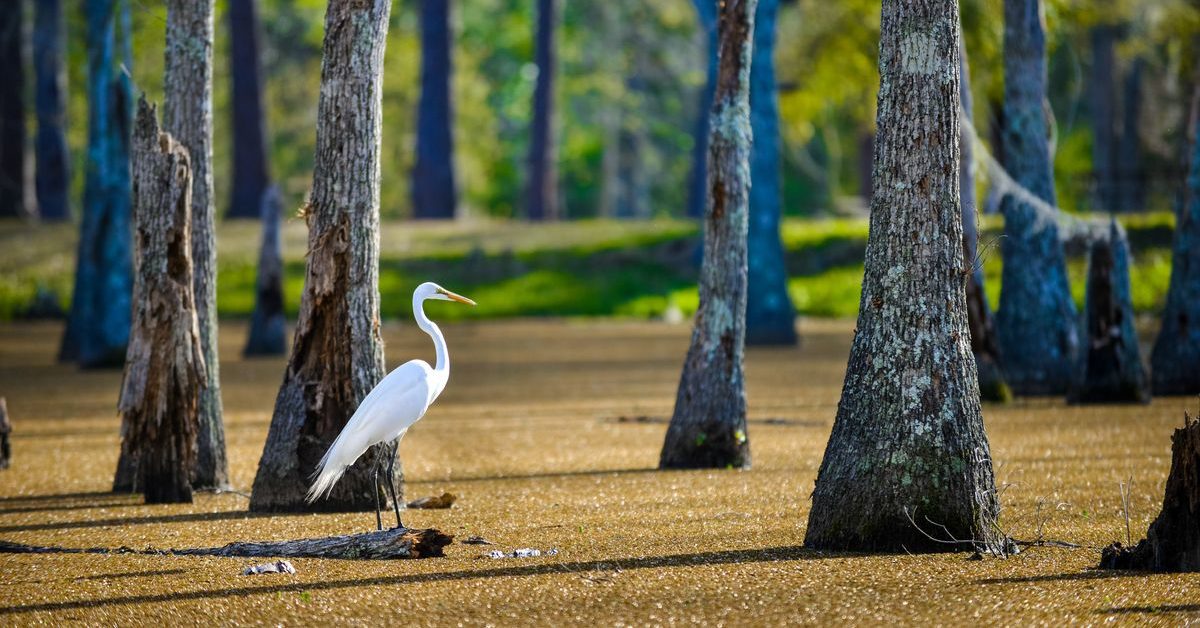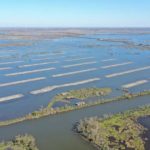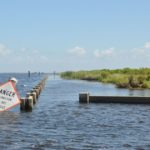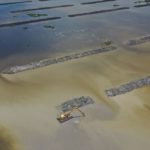Louisiana is home to about 40 percent of the total wetlands in the United States. They provide valuable services, such as being home to many types of plants and wildlife, providing protection from storms and flooding, and serving as waterways for transportation.
Due to both human activity and natural factors, Louisiana’s precious wetlands are being lost at an alarming rate. Wetlands mitigation helps to offset these losses through the creation, enhancement, and restoration of Louisiana’s coastal wetlands.
This article will further delve into understanding Louisiana’s wetlands and the services they provide, the importance of mitigation, and how mitigation is being performed.
How are Wetlands Identified in Louisiana?
The Corps and the Environmental Protection Agency (EPA) define a wetland (s) as follows: Those areas that are inundated or saturated by surface or ground water at a frequency and duration sufficient to support, and that under normal circumstances do support, a prevalence of vegetation typically adapted for life in saturated soil conditions. They consist mainly of swamps, marshes, and bogs.
Louisiana’s wetlands that are found along the Atlantic coast are considered coastal, or tidal, wetlands. Those that are not located along the coast are known as inland or non-tidal wetlands.
Can You Build on Wetlands in Louisiana?
Because wetlands provide such valuable and irreplaceable services, there are significant legislature and government policies protecting them. As much as possible, damage to wetlands should be avoided. This is where wetland mitigation comes in.
According to the EPA, the Clean Water Act allows for wetlands to be destroyed as long as the losses are compensated for through restoration, enhancement, or creation of other wetlands so that there is no net-loss of wetland area. This is where wetland mitigation comes into play. When damage is done to wetlands in one area, the loss is compensated by mitigating wetlands in another area.
Wetland development and mitigation is regulated by the United States Army Corps of Engineers and the Environmental Protection Agency. Environmental consulting companies (like us!) work with clients to determine appropriate mitigation methods and help the projects come to life. We service clients throughout Louisiana and in nearby states.
How Much Does It Cost to Mitigate Wetlands in Louisiana?
There are different types of wetland mitigation. Each type has its own benefits and disadvantages, as well as a unique cost associated with it. Different mitigation strategies will work better for different areas and wetland types. This section will discuss the most common mitigation strategies that are used in Louisiana’s wetland mitigation.
Upland Buffer Preservation
Upland Buffer Preservation refers to the legal protection of a stream or wetland and its upland buffer, the land attached to it that helps to protect it from damage. Upland buffers may consist of different types of land, but the land must be maintained in its original state, leaving vegetation undisturbed.
Restoration of Degraded Wetlands and Streams
Restoration of degraded wetlands attempts to rehabilitate areas of wetlands that have been damaged by human and natural activities. The goal is to reestablish or rehabilitate the natural and historic functions of the specific wetland. A simple example of this mitigation strategy is the replanting of flora that are native to the wetland. Another example is the extraction of ditches and drains in the wetland.
Enhancement of an Aquatic Resource
The mitigation strategy of enhancement modifies the structural characteristics of an aquatic resource to boost its functionality, such as through site elevations or modifications of the proportion of open water. Modification may be physical, biological, or chemical.
The goal is often the diversity of vegetation that is native to the wetland or improving the habitat of native wildlife, water quality improvement, or flood water retention.
Creation of Constructed Wetlands
Constructed wetlands are manmade bodies of water that attempt to replicate the function of natural wetlands. For instance, manmade wetlands often are created to treat wastewater, capture stormwater, or provide habitat to native wildlife.
The construction of manmade wetlands consists of building three layers: an impermeable layer, often made of clay, a gravel layer that provides water and nutrition for vegetation roots, and an above-ground surface zone that includes vegetation native to wetlands. The exact construction and materials used will depend on the main purposes that the manmade wetlands will fulfill.
Once a developer has been permitted to work on wetlands, it needs to purchase mitigation credits from a mitigation bank to offset the damage that will occur to the developed land. Mitigation banks are developed by bank sponsors, which develop wetlands specifically for mitigation, according to the USDA Natural Resources Conservation Services.
The cost of mitigation credits varies greatly depending on the type and quality of wetland being mitigated, the area where the wetland is located, and the resources being preserved or created. Costs also vary greatly by state, market value and demand, and the cost of recouping investment capital.
The average cost per credit in Louisiana is $20,000 to $40,000 for non-coastal wetlands and $60,000 to $100,000 for coastal wetlands. For more information check out our article on how much wetland mitigation costs.
Why is it Important to Restore Louisiana’s Wetlands?
Wetlands in Louisiana are being lost at an alarming rate. According to the United States Geological Survey, about half of the wetlands in the United States have been lost over the past two centuries and Louisiana’s 3 million acres of wetlands are being lost at an approximate rate of 75 square kilometers each year.
At this rate, wetlands in the state will be gone in about 200 years. This is occurring due to natural factors, such as hurricanes, the disintegration of barrier islands, and shifts in the course of the Mississippi River, and human activity such as development and construction.
Storm and Flood Protection
As mentioned earlier, Louisiana’s wetlands are an invaluable resource that provide many varied services. One critical function of Louisiana’s coastal wetlands is storm protection. According to Southeastern Louisiana University, storm surge can be reduced by one foot by every 2.7 miles of wetlands.
Wetlands and their barrier islands also protect inland areas from strong and damaging storm winds. The majority of Louisiana’s population lives within 50 miles of the coast. Decreased wetlands put a huge number of state residents and their homes and properties in great danger from increasing storm surges and dangerous winds.
Eroded wetlands lead to significant costs in property value, human life, and economic activity. In addition to protection from storm surges and winds, wetlands also provide incredible protection from flooding.
The soil in wetlands is often able to soak up significant amounts of rainwater, storing it safely before it is released into nearby bodies of water. Without wetlands to provide this service, the damage from storms increases drastically.
Preservation of Wildlife and Marine Species Habitat
Southeastern Louisiana University also explains that Louisiana’s coastal wetlands serve a critical role in the protection of wildlife and marine species. Endangered and threatened species can be found in the state’s wetlands and their existence is imminently threatened by wetland loss and damage.
In fact, almost all of the marine species in the Gulf of Mexico, approximately 95%, spend all or a portion of their lifecycle in Louisiana’s wetlands. Destruction of this land would affect almost the entire array of Gulf of Mexico marine wildlife.
Commercial fisheries located in the Louisiana wetlands provide about a third of the United States’ commercial catch, with species such as shrimp, oysters, crabs, gulf menhaden, crawfish, red snapper, and many others.
The seafood industry contributes over $1 billion annually to the state’s economy, according to the United States Geological Survey. The loss of marine species in the wetlands affects not only the natural environment and biodiversity but has very real implications for monetary loss and economic harm.
Transportation and Critical Infrastructure
Another valuable function of Louisiana’s wetlands is the protection of pipeline that carries oil and gas. There are approximately 68,000 miles of pipeline in the state, according to Southeastern Louisiana University.
The pipeline is becoming ever-more vulnerable to water, storm surges, winds, and water traffic as the coastal wetlands erode. Wetland mitigation can help to protect this infrastructure and the transportation of a significant amount of the nation’s fuel. The wetlands are also used for marine transportation and wetland destruction puts these critical passageways at risk.
Final Thoughts
Wetlands are a vital piece of Louisiana’s ecology. From protecting wildlife species to serving as a transportation hub and protecting people and property from storm damage, wetlands provide invaluable services.
Ongoing wetland destruction threatens the state’s biodiversity and economy, and some of the nation’s important infrastructure. Wetlands mitigation is serving a pivotal role in protecting these services through the preservation, restoration, enhancement, and creation of wetlands.
Mitigation banks and environmental consulting agencies play a lead and crucial role in wetlands protection and the many benefits that are realized through mitigation.





